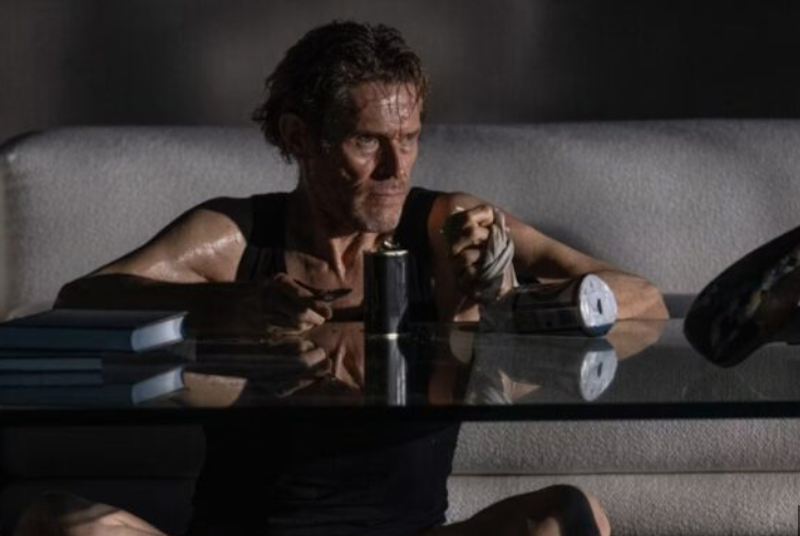Vasilis Katsoupis’ Inside is a film whose metaphor is at odds with its pleasures. It’s a movie about how being stuck in an apartment with Willem Dafoe for 100 minutes is a kind of hell. But most people who want to watch it (including me) are probably going to think that being stuck staring at William Dafoe’s weird, lined face and gangly ectomorph body for a whole movie is pretty entertaining, and not a nightmare of paranoid claustrophobia at all.
Inside starts off feinting that it’s going to be a heist. Dafoe’s Nemo, an art thief who breaks into a palatial apartment to steal rare and expensive paintings. This isn’t Ocean’s Fifteen, though; the heist quickly goes awry. When Nemo’s buddy outside hacks the computer to let him out, the door jams, the AI melts down, and Nemo’s stuck inside, alone, with millions of dollars’ worth of stuff.
That millions of dollars’ worth of stuff is a lot less useful than you might hope as a thief. There’s little food in the refrigerator or the pantry, and the water doesn’t work. The temperature controls are broken, alternately toasting and freezing our hero. There’s a security system that allows him to see people wandering around the building, but he can’t call out.
The set-up seems inspired in part by Ballard’s High-Rise, and sure enough, Nemo is soon descending into chaos, madness, and general repulsiveness. He tries to use heavy objects to break a window to no avail. Then he builds a ladder to the skylight out of chairs and tables. He pitifully scrapes the walls of the freezer for ice shards to drink, contorting his lips in extreme close-up. The toilet doesn’t work, so he finds a handy depression and wipes his butt with book pages; we get a lingering close-up of the feces. We also get lots of lingering close-ups of him sweating. And what is going to happen to those fish in the tank? And… why is he stabbing himself in the mouth with a contrived pick?
As time goes on, the apartment gets more and more chaotic, and so does Nemo’s mind. He defaces paintings and draws vaguely mystical sigils and images on the walls. How to interpret those sigils is never clear. Ballard was showing us that modern society, for all its gleam and chrome, is only a hairsbreadth removed form atavistic savagery. But there’s no society in the apartment—just Nemo.
Perhaps his torment is meant to show how avarice consumes the greedy, but the movie doesn’t feel moralistic. And Nemo doesn’t appear motivated by outsized greed. He abandons any pretense of caring about money as soon as he realizes he’s trapped. It’s possible Katsoupis wants to say something about art and madness, but if so, it doesn’t come across.
It may leave you asking, like Mick LaSalle at the San Francisco Chronicle, “Why would anyone want to watch this? Why should anyone want to watch this?” If you have a lot of affection for the actor, though, Inside is entertaining.
Dafoe isn’t Nicolas Cage; he’s not crawling out of his skin for an hour and a half. Instead, it’s a more subtle screen-chewing, his rubbery, character-actor face twisting and grimacing, a tear squeezing from the eye here, a mildly manic smile there. He’s charmingly disgusting and disgustingly charming as he strips down to his underwear, unashamed of that 67-year-old body which is skinny and fat in all the wrong places. The moment when he realizes the toilet doesn’t flush is a small masterpiece of underacting, as he lets a line of spittle fall into his own urine in a defiant acquiescence in repulsive despair.
For some people, that’s going to sound like a good time. Either way, the apartment isn’t really a cage or a torture chamber so much as a stage. Inside doesn’t tell you anything about the human soul except whether you want to stare at that one guy. If you do, you won’t feel trapped at all.

